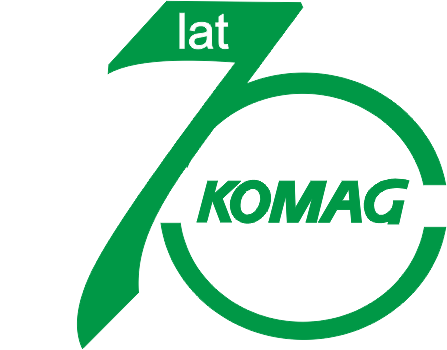Bożena Rakwic
Monografia nr 36
Gliwice 2011, s.1-167, il., bibliogr. 197 poz.
ISBN 978-83-60708-56-9
cena egz. 35,00 zł
Odpady z górnictwa węgla kamiennego stanowią największy strumień odpadów wytwarzanych w Polsce. Parametry geotechniczne potwierdzają możliwość zastosowania tych odpadów w budownictwie drogowym.
Ponadto przygotowywana ustawa o odpadach traktuje odpady jako produkt uboczny w procesie wydobywczym węgla kamiennego. Istotnym ograniczeniem dla rozwoju tego racjonalnego gospodarczo kierunku wykorzystania odpadów, stanowi brak wytycznych, pozwalających na przeprowadzenie oceny ich przydatności z uwzględnieniem specyficznych właściwości odpadów i ich zmian, w powiązaniu z uwarunkowaniami geotechnicznymi, budowlanymi, eksploatacyjnymi i środowiskowymi obiektu. Dla wykazania możliwości modyfikacji metod oceny przydatności odpadów w budownictwie drogowym i oceny zagrożeń środowiska gruntowo – wodnego, przeprowadzono badania laboratoryjne i modelowe, zweryfikowane na stanowisku do prób lizymetrycznych. Wyniki badań wykazały, że mieszanki odpadowo – gruntowe, stosowane w budownictwie drogowym, stanowią czynnik kształtowania jakości wód powierzchniowych i podziemnych, w rejonach ich wykorzystania. Symulacje długoterminowego oddziaływania na środowisko badanych odpadów, przeprowadzone przy użyciu oprogramowania PHREEQC, wykazały, że stężenie niklu w odciekach z wymywania mieszanek, utrzymuje się na poziomie odpowiadającym V klasie jakości wód podziemnych (Rozporządzenie Ministra Środowiska z 23.07.2008 r.), tj. „wodom złej jakości”. Na podstawie wyników przeprowadzonych badań laboratoryjnych, modelowych i lizymetrycznych określono wytyczne modyfikacji metody oceny przydatności odpadów górnictwa podziemnego w budownictwie drogowym, ukierunkowanej na wykorzystanie modelowania hydrochemicznego.
Wastes from the hard coal mining industry are the biggest stream of wastes produced in Poland. Production of one tone of hard coal results in generation of 250 kg to 300 kg of wastes, which require proper mana- gement. Production of aggregates, which can be used in road con- struction and in hydrotechnical building, is one of the methods to utilize wastes from the hard coal mining industry. Geotechnical parameters as well as nearly 50-year experience in use of wastes from hard coal mining industry in engineering, hydrotechnical and road building confirm a possibility of using large amount of these wastes in material-con- suming earthworks.
New regulation as regards wastes, plans radical change of status of some wastes, qualifying them as mineral, which is mined together with hard coal.
Lack of suitable guidelines, which enable making assessment of wastes usefulness, taking into account specific properties of wastes and their changes, in association with geotechnical, construction, exploitation and environmental conditions, is a limitation for a development of this economically rational and technically favourable method of using wastes from hard coal mine industry. Legal regulations as regards safety of use of wastes in road construction, which are in force, do not include all the aspects of assessment of impact of wastes from hard coal mining industry on water-and-soil environment. Especially chemical properties of wastes from hard coal mining industry, including leachability of heavy metals determined by the tests consisting in leaching by distilled water, conducted in the light of obligatory criteria for permission for wastes disposed or as regards conditions for drainage of sewage to water or soil, do not show any hazards to soil-and-water environment.
Laboratory tests and model tests, verified on the stand for liziy- metric tests, were carried out to show possibilities of modification of the method for assessment of usefulness of mine wastes for road construc- tion and for assessment of hazard to soil-water environment. Analysis of environment monitoring data has shown that precipitation water in the area of one dumping sites in Upper Silesia, from which the samples were taken, have water pH below the natural acidity. pH decrease of precipitation water is a result of presence of strong inorganic acids pro- duced in the result of dissolution of sulfur oxides (IV) and (VI) and nitrogen oxides (III) and (V), which can be found in ambient air. In the light of above sulfur (VI), nitrogen (V) and chloride ions were selected as the components of leaching liquid.
The laboratory test results have shown that waste-soil mixtures, used in road construction, are important in shaping quality of surface and underground water in the area, where they are used. Especially the tests with distilled water have proved that released amount of lead (Pb) does not meet criteria for wastes disposal. For the tests with liquid of lowered pH zinc (Zn), nickel (Ni) and lead (Pb) leachability was higher than acceptable limit concentrations for disposal on neutral wastes dump sites.
Impact of parameters, which characterize conditions of washing out of soil-wastes mixture in roads on amount of selected heavy metals lea- ched by precipitation water, has been determined by model calculations using PHREEQC software, considering changes in material type, in amount of available oxygen and temperature and pH of precipitation water. The calculation results have shown that amount of leached heavy metals increase in the presence of pyrite and siderite as well as in the case of access to oxygen and low temperature and pH of water preci- pitation. Presence of minerals that can neutralize of acids as well as limi- tation in oxygen and infiltrating water access can reduce heave metals washing out reducing contamination of soil-water environment at the sa- me time. Simulation of long-term action of tested wastes on environment has proved the concentration of nickel in runoff water is kept on the level referring to V class of underground water quality (Decree of Ministry of Environment dated 23 July 2008) i.e. “water of bad quality”.
Verification of model calculations were made by comparison of re- sults of simulation of heavy metals washing out from soil-wastes mix- tures with the results obtained on lizymetric test stand. Verification tests were carried out on the stand for lizymetric tests, where washing out conditions were similar to the conditions in which washing out of soil-wastes mixtures can occur in road objects. The results on lizymetric stand have confirmed lead (Pb), nickel (Ni) and zinc (Zn) leachability.
On the basis of the laboratory, model and lizymetric test results the guidelines for modification of the method for assessment of mine wastes usability for road construction, directed towards use of hydro-chemical modelling, were specified.


